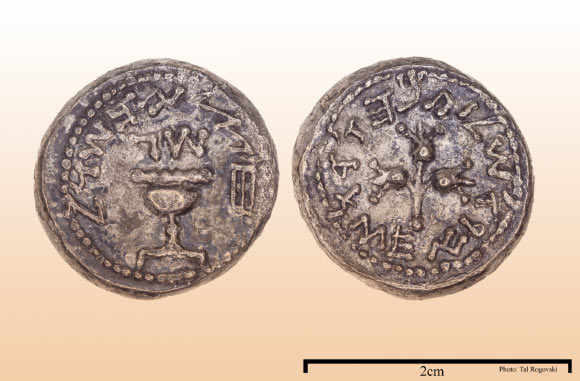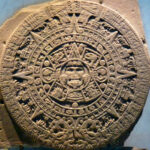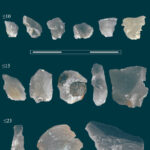Archaeologists from the Institute of Archaeology at the Hebrew University of Jerusalem have unearthed an assemblage of Jewish coins, including a very rare half-shekel coin, from the Great Revolt period (66-70 CE).
The 1,950-year old half-shekel silver coin found in Jerusalem, Israel. Image credit: Tal Rogovski / Hebrew University of Jerusalem.
The half-shekel coin was found in the Ophel area, south of the Temple Mount in Jerusalem, Israel.
“This is the third coin of this type found in excavations in Jerusalem, and one of the few ever found in archaeological excavations,” said Hebrew University’s Professor Uzi Leibner and colleagues.
“During the Great Revolt against Rome, the Jews in Jerusalem minted bronze and silver coins.”
“Most of the silver coins featured a goblet on one side, with ancient Hebrew script above it noting the year of the Revolt.”
“Depending on its denomination, the coins also included an inscription around the border noting either, ‘Israel shekel,’ ‘half-shekel,’ or ‘quarter-shekel’.”
“The other side of these coins showcased a branch with three pomegranates, surrounded by an inscription in ancient Hebrew script, ‘Holy Jerusalem’.”
“Throughout the Roman era, the authority to produce silver coins was reserved solely for the emperor,” they added.
“During the Revolt, the minting of coins, especially those made of silver, was a political statement and an expression of national liberation from Roman rule by the Jewish rebels.”
“Indeed, throughout the Roman period leading up to the Great Revolt, no silver coins were minted by Jews, not even during the rule of King Herod the Great.”
Half-shekel coins — which had an average weight of 7 g — were also used to pay the half-shekel tax to the Temple, contributed annually by every Jewish adult male to help cover the costs of worship.
“Until the Revolt, it was customary to pay the half-shekel tax using good-quality silver coins minted in Tyre in Lebanon, known as ‘Tyrean shekels’ or ‘Tyrean half-shekels’,” said Dr. Yoav Farhi, an numismatic expert and curator of the Kadman Numismatic Pavilion at the Eretz Israel Museum.
“These coins held the image of Herakles-Melqart, the principal deity of Tyre, and on the reverse they featured an eagle surrounded by a Greek inscription, ‘Tyre the holy and city of refuge’.”
“Thus, the silver coins produced by the rebels were intended to also serve as a replacement for the Tyrean coins, by using more appropriate inscriptions and replacing images — forbidden by the Second Commandment — with symbols.”
“The silver coins from the Great Revolt were the first and the last in ancient times to bear the title ‘shekel’.”
“The next time this name was used was in 1980, on Israeli Shekel coins produced by the Bank of Israel.”




